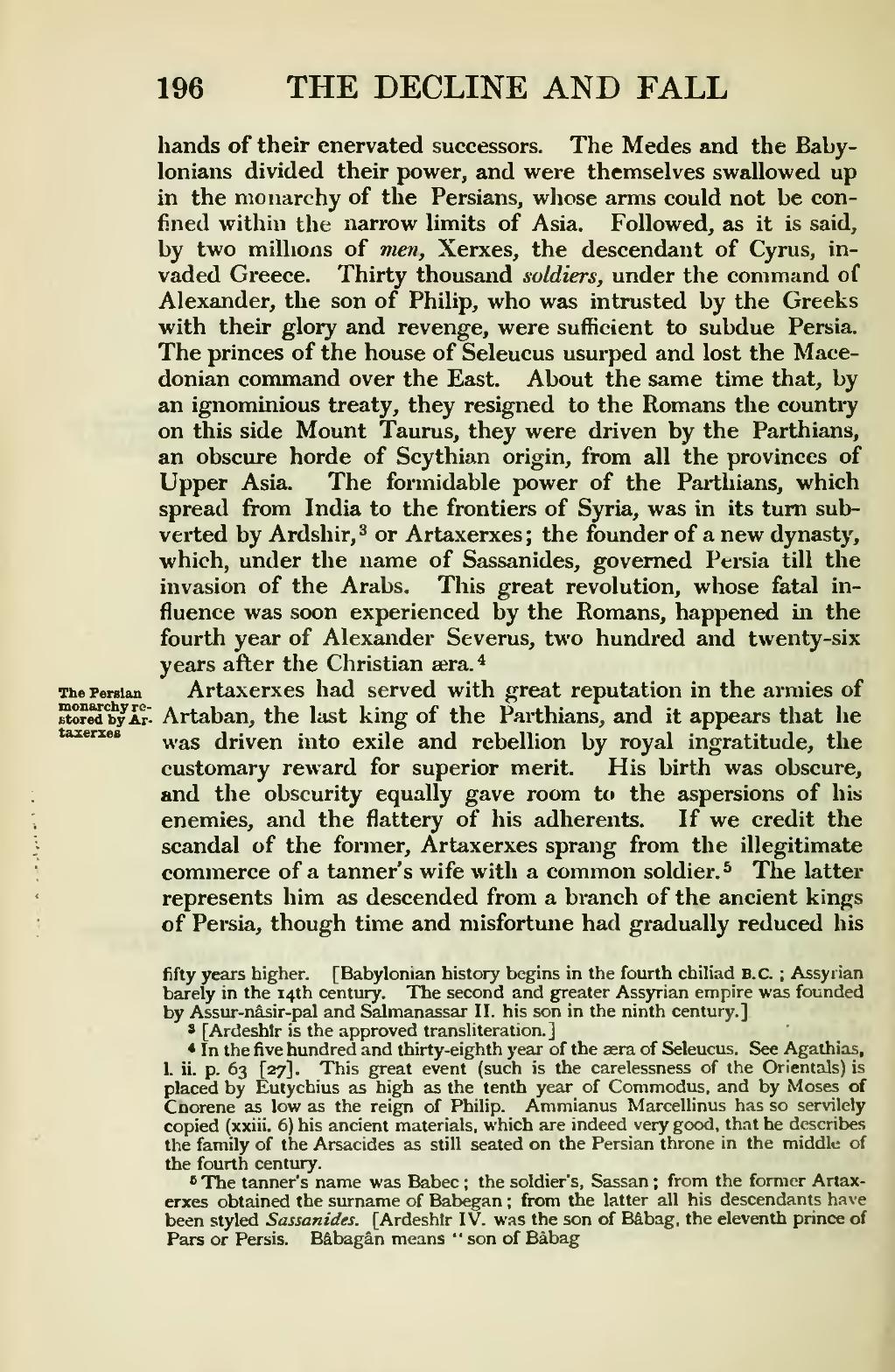hands of their enervated successors. The Medes and the Babylonians divided their power, and were themselves swallowed up in the monarchy of the Persians, whose arms could not be confined within the narrow limits of Asia. Followed, as it is said, by two millions of men, Xerxes, the descendant of Cyrus, invaded Greece. Thirty thousand soldiers, under the command of Alexander, the son of Philip, who was intrusted by the Greeks with their glory and revenge, were sufficient to subdue Persia. The princes of the house of Seleucus usurped and lost the Macedonian command over the East. About the same time that, by an ignominious treaty, they resigned to the Romans the country on this side Mount Taurus, they were driven by the Parthians, an obscure horde of Scythian origin, from all the provinces of Upper Asia. The formidable power of the Parthians, which spread from India to the frontiers of Syria, was in its turn subverted by Ardshir,[1] or Artaxerxes; the founder of a new dynasty, which, under the name of Sassanides, governed Persia till the invasion of the Arabs. This great revolution, whose fatal influence was soon experienced by the Romans, happened in the fourth year of Alexander Severus, two hundred and twenty-six years after the Christian aera.[2]
The Persian monarch restored by ArtaxerxesArtaxerxes had served with great reputation in the armies of Artaban, the last king of the Parthians, and it appears that he was driven into exile and rebellion by royal ingratitude, the customary reward for superior merit. His birth was obscure, and the obscurity equally gave room to the aspersions of his enemies, and the flattery of his adherents. If we credit the scandal of the former, Artaxerxes sprang from the illegitimate commerce of a tanner's wife with a common soldier.[3] The latter represents him as descended from a branch of the ancient kings of Persia, though time and misfortune had gradually reduced his
- ↑ [Ardeshlr is the approved transliteration.]
- ↑ In the five hundred and thirty-eighth year of the asra of Seleucus. See Agathias, l. ii. p. 63 [27]. This great event (such is the carelessness of the Orientals) is placed by Eutychius as high as the tenth year of Commodus, and by Moses of Cnorene as low as the reign of Philip. Ammianus Marcellinus has so servilely copied (xxiii. 6) his ancient materials, which are indeed very good, that he describes the family of the Arsacides as still seated on the Persian throne in the middle of the fourth century.
- ↑ The tanner's name was Babec; the soldier's, Sassan; from the former Artaxerxes obtained the surname of Babegan; from the latter all his descendants have been styled Sassanides. [Ardeshtr IV. was the son of Babag, the eleventh prince of Pars or Persis. Bâbagan means son of Bâbag
fifty years higher. [Babylonian history begins in the fourth chiliad B.C.; Assyrian barely in the 14th century. The second and greater Assyrian empire was founded by Assur-nasir-pal and Salmanassar II. his son in the ninth century.]

